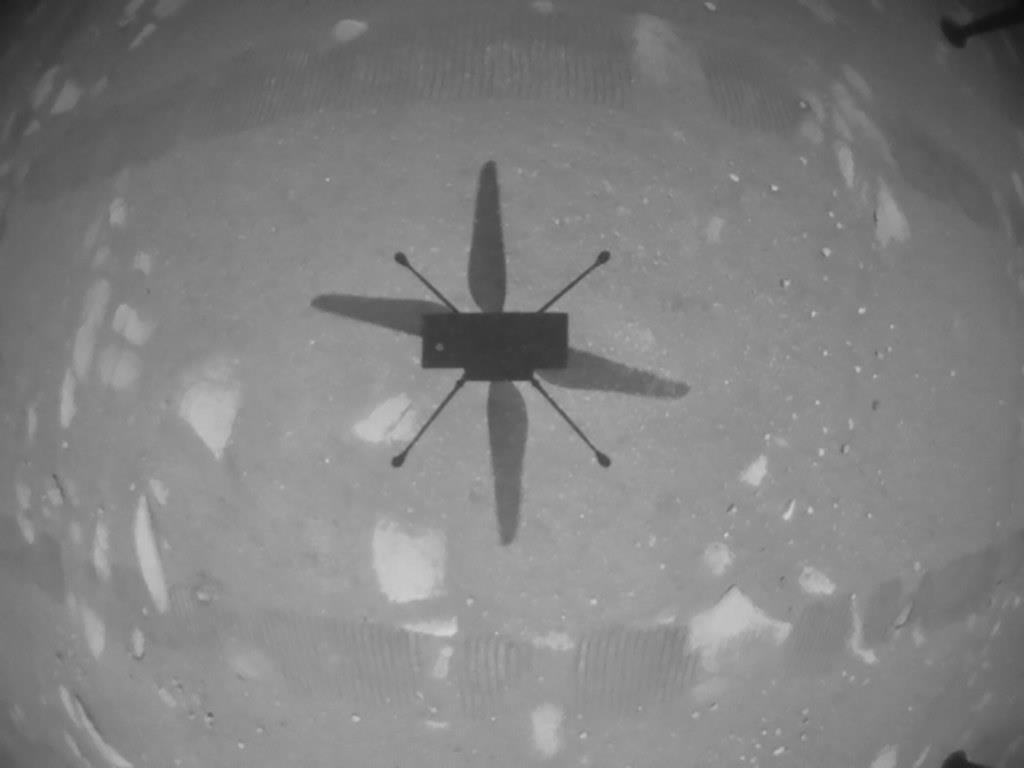NASA’s Perseverance mission reaches adolescence on the red planet
Authors: Juan Pablo Avila, Leonardo Times Editor, and Topias Pulkkinen, Editor-in-chief
Since the project’s announcement, NASA’s Perseverance mission has long intrigued Mars enthusiasts around the world. The mission certainly hasn’t been cheap on both the minds of the scientists and engineers or the US taxpayers. Yet, the mission is on course to demonstrate feats of engineering critical for planetary exploration.
NASA’S LATEST MISSION TO MARS
As you may recall, Perseverance launched on July 30, 2020, and landed on Mars on February 18, 2021, as part of NASA’s Mars 2020 mission. Perseverance comes as the successor to Curiosity, a rover that landed on Mars on August 5, 2012, and is still in operation until this day. Therefore, the bar for Perseverance is set high, and it will look to succeed in its main mission to “seek signs of ancient life and collect samples of rock and regolith for a possible return to Earth” [1]. The latter part of this mission statement stands out: NASA is already considering missions that involve returning from Mars to Earth, not just staying there. Thus, Mars 2020 definitely represents a big step in Martian exploration, making everything related to Perseverance even more critical. The mission’s main purposes are; to search for habitability, seek biosignatures, catch samples and prepare the planet for human exploration [1]. Relative to these goals, the first two years of the mission on the Red Planet have been rather fruitful.
JEZERO CRATER
After several years of investigation, discussion, and deliberation, NASA chose the Jezero Crater as the landing site for Perseverance. It is thought that this crater was a river delta in the distant past when there was liquid water on the Martian surface. Consequently, the Jezero Crater is a prime spot to look for signs of ancient life, especially on the lakebed or the shoreline [2]. Perseverance has yet to find signs that life once existed on Mars, but, at the time of writing, it is heading to an interesting area in the crater called “Yori Pass”. Scientists are keen on exploring this area as it contains sandstone, a rock that forms from sediments carried by water. Thus, Perseverance will try to find any biosignatures in this sandstone as evidence of ancient life on the Red Planet. Furthermore, something notable that Perseverance has discovered has been the organic matter found in sedimentary rock, known for preserving fossils of ancient life here on Earth [3].
FLYING ON THE MARTIAN ATMOSPHERE
Perhaps the most well-known piece of technology on Perseverance is Ingenuity, the Mars Helicopter, and with good reason: it was the first successful demonstrator of powered flight on Mars. It is, therefore, the foundation for more complex aerial vehicles on Mars, which potentially could be used for surveying and other similar missions [4]. Ingenuity arrived at the Red Planet inside the Perseverance rover itself and was then deployed on the Martian surface. However, flying on Mars is no easy feat for such a vehicle, given that Mars’ atmosphere is just 1% as dense as Earth’s. Therefore, Ingenuity had to be engineered to be incredibly light (just 1.8 kg!), and its rotors are proportionally very large, measuring 1.2 m from tip to tip [4]. At the time of writing, Ingenuity has completed an incredible 34 flights, with the first one happening on April 19, 2021, and the latest on November 22, 2022. Flights have generally been short, with the longest one lasting around 2.8 minutes. Even then, do not let that number fool you. So far, Ingenuity’s mission has been a tremendous success, already making NASA think about the next step in Martian aerial vehicles.

MOXIE
Aside from Ingenuity, the Mars 2020 mission also plans to test the Mars Oxygen In-Situ Resource Utilization Experiment, or MOXIE, located on the Perseverance rover itself. With this piece of technology, NASA aims to test a system capable of synthesizing molecular oxygen from Mars’ atmosphere, which is predominantly composed of carbon dioxide [5].
Oxygen is crucial, not only because it is required to enable us humans to breathe, but it is also necessary for future missions if they are to launch from Mars. For rocket-propelling combustion reactions to occur, oxygen is needed. To launch even a reduced group of astronauts from Mars around 30 tons of it are required [5]! Therefore, it is vital that oxygen can be synthesized on Mars, as carrying that much more extra weight on a rocket from Earth would prove unviable for larger missions.
WHAT’S YOUR PLAN B, PERSEVERANCE?
Due to the nature of space exploration, not all has gone according to plan for Perseverance. For instance, it did not land where expected at first. Perseverance was scheduled to land within 100 meters of the river delta, but it actually ended up 2.5 km away. Not only that, but scientists quickly realized that the surface Perseverance sat on was composed not of lake sediments, but igneous rock [6], a shock when they were primarily interested in the former.
Then, when Perseverance made its way to the Jezero crater to take its first rock sample, it came up empty-handed. The rover had failed in something it should have no problem doing: coring a rock. NASA underestimated how fragile these rocks would be due to the influence of water in the distant past. Therefore, Perseverance actually destroyed the first rock it tried to core and failed to collect the sample [6].
These are just some of the challenges Perseverance has had to face since it began operations on Mars. However, challenges like these are almost routine in any space mission. So, the scientists and engineers at NASA have been able to overcome these and many more. It proves that for these types of missions, one should always expect the unexpected.
BUDGET
The Perseverance certainly hasn’t been cheap due to its many cutting-edge technologies. Firstly, the project’s estimated life-cycle costs land in the ballpark of $2.7 Billion USD, where the design and construction of the spacecraft alone took a lion’s share of $2.2 Billion USD [7]. The Ingenuity Helicopter alone took $80 million USD, making it one of history’s most expensive 1.8 kg transport vehicles. Just one month of its operations costs NASA $5 million. This is notable when compared to the Atlas V launch cost of approximately $243 million since the launcher is such a crucial part of the mission’s requirements [8].
CONCLUSION
Despite having one of NASA’s history’s greatest project budgets and the technical problems encountered in the early stages of the mission, which probably won’t be its last, Perseverance has already provided mankind with a deeper understanding of Mars’ composition. With many novel technologies deployed on this mission in demonstrating ingenuity, NASA has shown strong proof-of-concept for ultralight reusable flight as means for planetary surveying. With this in mind, it suffices to say that Perseverance is unlikely to run out of this very trait any time soon.
REFERENCES
[1] “Mars 2020 Perseverance Rover.” NASA, NASA, https://mars.nasa.gov/
[2] “Jezero Crater – Perseverance Landing Site.” NASA, NASA, https://mars.nasa.gov.
[3] Laboratory, Jet Propulsion. “Life on Mars? Latest Intriguing Organic Findings by NASA’s Perseverance Rover.” SciTechDaily, 23 Sept. 2022, https://scitechdaily.com
[4] Landau, Elizabeth. “10 Things: Mars Helicopter – NASA Solar System Exploration.” NASA, NASA, 31 Aug. 2018, https://solarsystem.nasa.gov
[5] Hecht, Michael. “Mars Oxygen in-Situ Resource Utilization Experiment (Moxie).” NASA, NASA, https://mars.nasa.gov
[6] Drake, Nadia. “What We Learned from the Perseverance Rover’s First Year on Mars.” Scientific American, Scientific American, 17 Feb. 2022, https://www.scientificamerican.com
[7] McCarthy, Niall. “How the Cost of Perseverance Compares to Other Mars Missions [Infographic].” Forbes, Forbes Magazine, 19 Feb. 2021, https://www.forbes.com
[8] “Cost of Perseverance.” The Planetary Society, https://www.planetary.org

